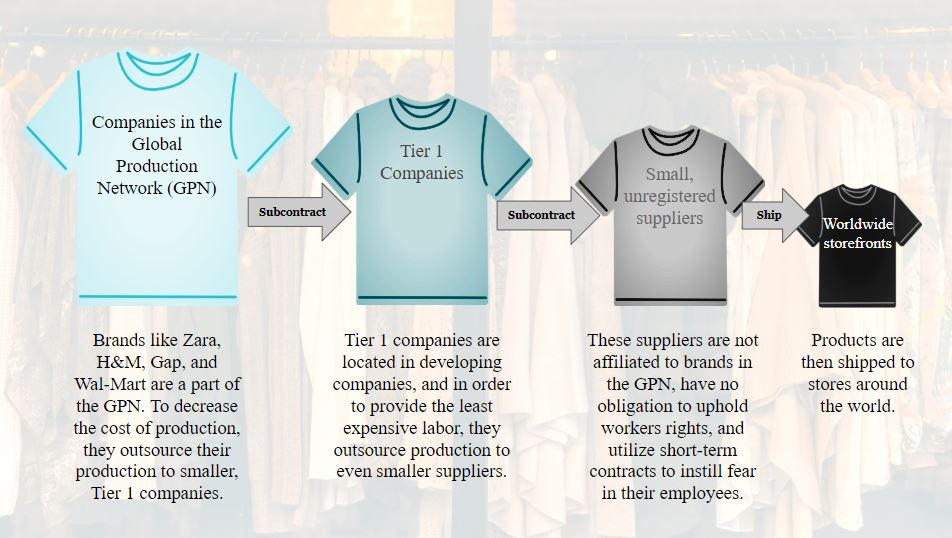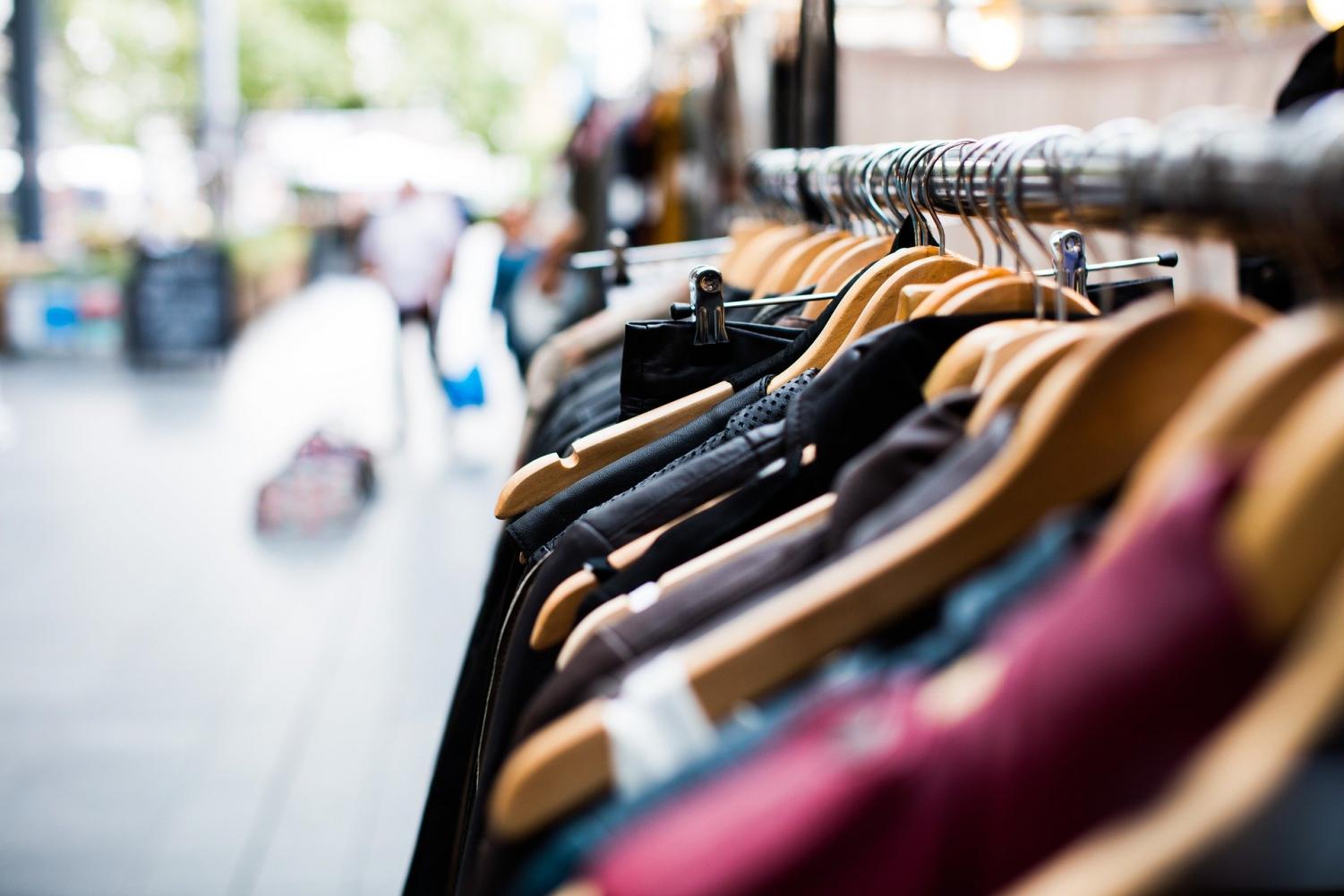Fast Fashion: What is it, and How Can We Work to End It?
February 4, 2020
Fast fashion is defined as “inexpensive clothing produced rapidly by mass-market retailers in response to the latest trends.” It is quick, cheap, replaceable, and motivated by desire, not need. Most importantly though, it is a threat against worker’s rights and the health of our environment.
The textile industry has always been a cruel one. Built upon the abuse of slaves, child laborers, and adult employees, it is an industry based upon inhumanity and exploitation, and it was crucial to the development of a capitalist society.
More than 60% of the fabric fibers in use today are synthetics derived from fossil fuels. These synthetic materials work their way into our ecosystems, and never degrade. In landfills, these toxins seep into our soil and groundwater, contaminating everything around us. As of now, most donated clothes do end up in a landfill. Fast fashion produces clothing fast enough that it is practically impossible to recycle it all.

Companies in the GPN consistently outsource their production to lower costs.
Fast fashion is a 2.4 trillion dollar a year industry, as thousands upon thousands of new styles are churned out everyday. It is mainly produced by something called the Global Production Network (GPN). This is a system which several large companies across the world take part in. These large companies outsource production to suppliers known as Tier 1 companies, which are mainly located in developing countries. These Tier 1 companies then subcontract production again, this time to other suppliers who, on paper, are not affiliated to any companies in the GPN. These suppliers are not vetted by the brands in the GPN, and therefore have no legal obligation to perform and uphold humane working conditions; as unregistered businesses, there is no government supervision and therefore no responsibility to uphold worker’s rights.
Yes, this system seems quite confusing. To break it down, it is extremely convenient to provide cheap work to large companies, because of the use of short-term contracts, which allow a constant flow of workers in and out of suppliers’ warehouses. These short-term contracts instill a constant fear of being fired, which prevents employees from reporting instances of abuse in the workplace.
Things like going to the restroom, drinking water, or having a break are unheard of to these employees, who are subject to wage theft and overwork. As a majority of these foreign workers are female, and their bosses male, this industry enforces a patriarchy within the workplace. Employees who do not meet quota experience verbal, sexual, and physical harassment at the hands of their superior. Today, slavery is being a woman in the Asian textile industry. Today, slavery is being a woman in the Asian textile industry.
Knowing all of this, we as consumers should choose to invest in “slow fashion,” a term coined by Dana Thomas in her book Fashionopolis. “Slow fashion,” characterized by locally grown materials, sourced and manufactured on a small scale, is a more mindful way to consume. By buying less clothing of a higher quality from sustainable sources, consumers tackle both the environmental and ethical issues that come with the fashion industry.
Fashion is constantly updating and fluctuating; what is ‘in style’ changes day by day. Fashion is somewhat cyclical, as old trends are coming back into fashion. In recent years, younger generations have started to style more “vintage” outfits. Walking down a city street, you can see outfits inspired by anything from the 50’s to the early 2000’s. As a result of this, more people shop at thrift stores like Goodwill or the Salvation Army, and lessen the demand for new articles of clothing.

Many consumers don’t consider how their clothes are produced, or where they have come from.
As the idea of mindful consumption is becoming more well-known, clothing rental companies have popped up in many countries. These services are becoming increasingly popular, not only for special occasions, but for everyday wear and tear. Many pieces of children’s clothing and maternity wear are available, as more and more people are not wanting to invest in items they will not need for a long time. These clothing rental services act as an environmentally friendly way to take part in new trends, and can be reached both online and in person.
Consumers must practice mindfulness in purchases when it is possible, in order to provide a safe place of work for those around the globe, and reduce waste production.